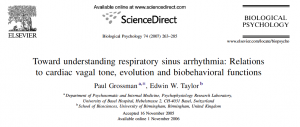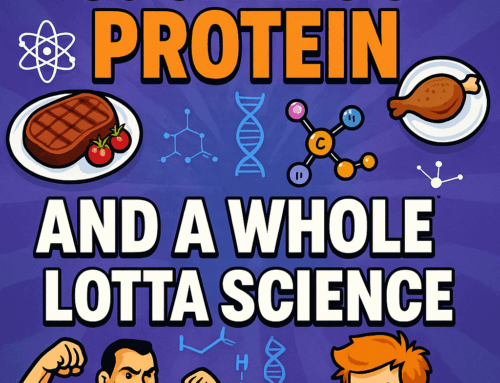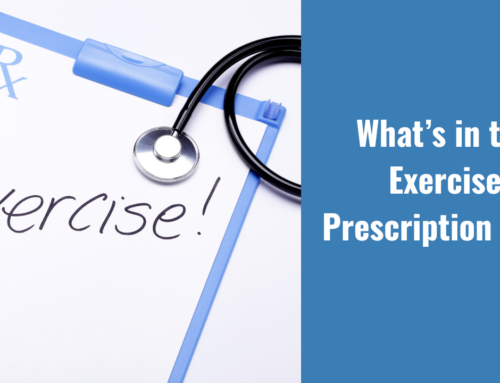Anatomy Trains Course “Moving through trauma” with Tom Myers July 2019: Notes from Mike T Nelson
Note- These are my ramblings that I wanted to share with you and represent my interpretation of the what I learned. When there was a direct quote, I placed it in quotes. I would highly recommend the course, so check out www.AnatomyTrains. com
**Disclosures- none, I paid for the course myself and get nothing if you attend.
“Learn all, forget, go to work.” – Tom Myers
The bones float in a soup of soft tissue.
The good neighbor rule- if you are not a therapist, you can only say to someone what a good neighbor would say.
When mixing modalities, most will create dish water not gourmet soap.
Are there really 600 muscles or only 1 muscle in 600 fascial pockets?
There is fluid between all layers of fascia.
Fluid in the bones stops crack propagation. This one was a huge light bulb for me, and gave me flashbacks to my Mechanics of Materials classes when I did my Masters in Mechanical Engineering since all my formal classwork there was in solid mechanics –aka, “how crap breaks.” Interestingly enough, we talked about this concept, but I never heard it applied to bone. Makes perfect sense though.
How do you hold 70 trillion cells together? Either glue- perhaps GAGs or weave- fascia
Compete vs coordinate / cooperate (not good vs bad).
Tom talked a bit about this too – but I wonder if cancer is a group of cells that are no longer cooperating and are thus competing in the body for selfish resources?
Traumatic experience / forgetting
I wonder if some who have a better memory / photographic memory, do they have more trauma since they have a harder time “forgetting”?
3 Domains
IQ = intelligence
EQ = emotional intelligence
KQ= kinesthetic literacy
Which one is missing?
“Spatial Medicine”
The goal is resilience / anti-fragile – the system learns and strengthens from the experience.
Someone who looks sad = their body giving in to gravity.
Biomech points for movement analysis. With only 15 points, you can see very different movement. This is fascinating to me that we can distill down a massive amount of information to very very few well placed points and still see different movement patterns in seconds.
“Trauma = a nail in your foot to ground, you will unconsciously circle around it.” – Tom Myers
Biomechanics shapes us.
No other animal has a psaos that touches the pelvis. Makes me wonder if that is why us human have a more “stuck” psoas as there is more force to “stick” the psoas to bone?
Humans are asymmetric but symmetry is a guide. Try chewing the other direction.
Echos
Our environment shapes us as do our customs and clothes…even thoughts?
Wilhelm Riech and Character Structure
Sheldon and somatotypes – based on the dominance of endo, meso or ecto-derm in development
Balancing the “lines” – from Anatomy Trains
Neural vs Vascular vs Fibrous
Neural = seconds
Vascular = minutes/ hours
Fibrous = days/ months
Antonio Domasio “the embodied mind”
“Somatic sensations (feelings) of the present moment superimposed on your autobiographical memory and our anticipated future.”
The Autonomic Nervous System (ANS)
Parasympathetic
- -your insides
- -the food eater
- -gut self
- -interoceptive
- -repose, repair, restore
Sympathetic
- -your outsides
- -the impression eater
- -neuro-motor self
- -proprioceptive
- -fight, flight, freeze (faint)
There is a fluid interface between parasymp and symp.
-Most of our emotions are “fluid” experiences (eg white w fear, flushed with embarrassment, etc).
Stress is neutral (and not “bad”).
Stress response is what matters (and changes).
Eustress– take a stress and be successful
- –happens when the body successful adapts to a challenge and changes
Distress – constant unresolved stress
- World expectations vs your sense of it
-Is there as discrepancy between your sense reports and your expectation?
Distress happens when the discrepancy is not resolved
Stages based on GAS 1) alarm 2) resistance 3) exhaustion
Startle response = contraction of the superficial front line
Hard exercise is a temporarily way to change chemistry of discrepancy but not a long term solution.
I know I get worried about clients who have to exercise to make it day to day. Long term, I want them to have a high and low movement strategy – hard exercise vs meditation.
A healthy ANS should have a ratio of 7:1 parasymp vs symp.
When working on clients watch for signs of parasympathetic and sympathetic
**Note- For online clients I love monitoring this using HRV.
The pattern of symp vs parasymp arc during a session
- Work to get them “over the hump” and let them go –resolution
Sympathetic Tuning Stages 1-3
Based on the work of Gellhorn
**Note- I did a rough literature search posted at the end.
Perhaps autoimmune issues are made worse when people are in stage 2?
Tom views the immune system as determination of everything in the body as “self” or “not self.” Main organ responsible is the kidney.
Polyvagal theory
- Analogy of an airplane headed to a mountain.
- The flying elevation of the airplane is your vitality.
- The mountain is something coming that could harm you.
- Modern medicine is good a dynamiting mountains.
Hands on work and other modalities work to raise your vitality (plane elevation) to allow you to fly above the mountain.
You can either 1) lift the plane or 2) blast the mountain.
As you work to lift the plane, the amount of variability in the system goes up quite a bit. I know I’ve seen this in clients when we find a new movement that helps reduce their pain. They will have less pain overall, but they will have some very very good days and will also have some very very horrible days in the process. The variability goes up until it reaches a new plateau.
Random notes
The body runs on tension or compression.
- Tension = move away
- Compression = move closer
Same idea can be applied to relationships of all forms.
“Trust is safety over time.” – Tom Myers
What is your best day skill-wise and what is your worst day skill-wise of your practice? Work to bring up your skill on your worst day.
GAGS have fluid channels to get to the cell
Muscle slips – muscle, fascia, and nerve together
- pec has 9
- lat has 17
My thoughts – there is some truth then to the old bodybuilding training of working different angles. The body thinks in neural slips of tissue (think motor units) not muscle origin and insertion – otherwise 1 nerve would innervation the entire lat – and it would not have different functions.
T12 / L1 = tight –may be related to gut / kidneys and fear
The things that you don’t know, run your subconscious.
“You are always working between your ceiling which is based on intuition and your floor which is based on your knowledge of anatomy.” – Tom Myers
Book by Deb Dana on polyvagal
I find that the polyvagal theory is good story that helps me in my practice. I am not sure if it is 100% accurate, and you can get into the weeds very very fast. Here is a great paper about the counter argument to it – shout out to Dr James Heathers on it.
“The polyvagal theory contains evolution-based speculations that relate RSA, vagal tone and behavioral phenomena. We present evidence that the polyvagal theory does not accurately depict evolution of vagal control of heart-rate variability, and that it ignores the phenomenon of cardiac aliasing and disregards the evolution of a functional role for vagal control of the heart, from cardiorespiratory synchrony in fish to RSA in mammals.”
Toward understanding respiratory sinus arrhythmia: relations to cardiac vagal tone, evolution and biobehavioral functions.
Grossman P1, Taylor EW. Pubmed LINK HERE

My thoughts to change with clients coming up and think on
- have them do more hanging exercises, esp from 1 arm
- the human body is so much more plastic than we think
- if trust is safety over time, how can I make them feel more safe?
- when to use tension vs compression?
Summary
Overall, I loved the course and this is not everything that was discussed as several items are IP of Tom and Anatomy Trains; and therefore, were not discussed here.
A huge thanks to Tom for doing the course and being so open with any questions that we asked. It is rare to find a teacher that uses actual hard data and intuition in a fluid manner, yet stays open minded enough to look at new data and evaluate their current beliefs.
Big thanks to everyone at Anatomy Trains for all the work they do to make courses like this one happen.
If you are a fitness professional of any form, I highly recommend their 5 day dissection course. I’ve done it 3 times now, and it is amazing to see fresh tissue. See the links below for my past notes.
Anatomy Trains Fresh Tissue Dissection 2: My Notes
Anatomy Trains Fresh Tissue Dissection 3: My Notes from Jan 2019 – coming soon
References
1: Gellhorn E. Further studies on the physiology and pathophysiology of the
tuning of the central nervous system. Psychosomatics. 1969 Mar-Apr;10(2):94-104.
Review. PubMed PMID: 4891210.
2: Gellhorn E. The consequences of the suppression of overt movements in
emotional stress. A neurophysiological interpretation. Confin Neurol.
1969;31(5):289-99. PubMed PMID: 5383224.
3: Gellhorn E. Central nervous system tuning and its implications for
neuropsychiatry. J Nerv Ment Dis. 1968 Aug;147(2):148-62. Review. PubMed PMID:
4877903.
4: Gellhorn E. Neurophysiological basis of homeostasis. Confin Neurol.
1968;30(4):217-38. PubMed PMID: 5705499.
5: Gellhorn E. Conditioning, sensations, and the ergotropic-trophotropic balance.
Cond Reflex. 1968 Jan-Mar;3(1):34-44. PubMed PMID: 5701959.
6: GELLHORN E. Further experiments on sympathetic and sympathetico-adrenal
discharges. Acta Neuroveg (Wien). 1959;20:195-204. PubMed PMID: 13827220.





Leave A Comment